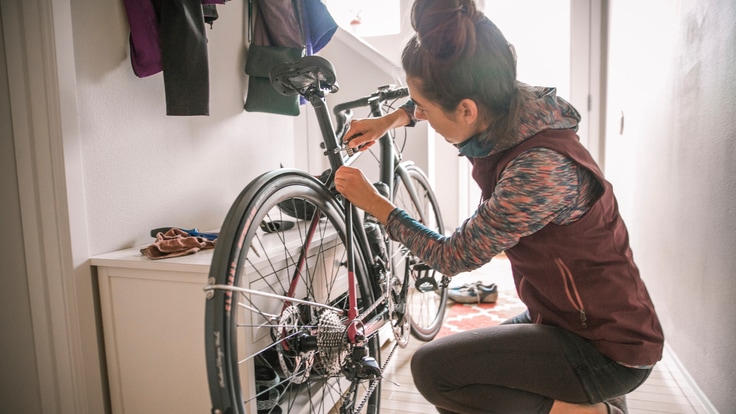Editor's note: This article was originally published on April 3, 2018. It was updated Oct. 30, 2019.
Packing a bike for the first time presents some challenges. Bikes can be delicate, expensive pieces of gear, and their size makes packing them awkward; getting them to a destination safely requires planning. Learn how to properly break down and prep your ride for transport, whether you're sending it in a box or a case.
To prepare your bike to be shipped, you'll need to:
- Choose your shipping method
- Prepare your bike by disassembling it
- Pack and ship it
Choose Your Bike Shipping Method
You have a variety of options when it comes to shipping a bike: a traditional shipping carrier or a specific bike-shipping specialist. Rates are always changing, so do your research before making a decision.
If you're flying, consider checking your bike. Be sure to consult with your airline for specific instructions and to see whether special fees apply. In 2019, American Airlines and Delta both announced the elimination of oversize bag fees for sports equipment like bikes.
There are also several container choices. Shipping carriers sell bike-specific boxes and packing materials. Sometimes bike shops have leftover shipping boxes and packing materials they will give away; ask around. If you plan to travel with your bike often, it may make sense to buy a bike bag or case.
Prepare Your Bike
Depending on your shipping method, you will have to do some disassembling to keep fragile components protected. Follow the tips below to secure each part of your bike.
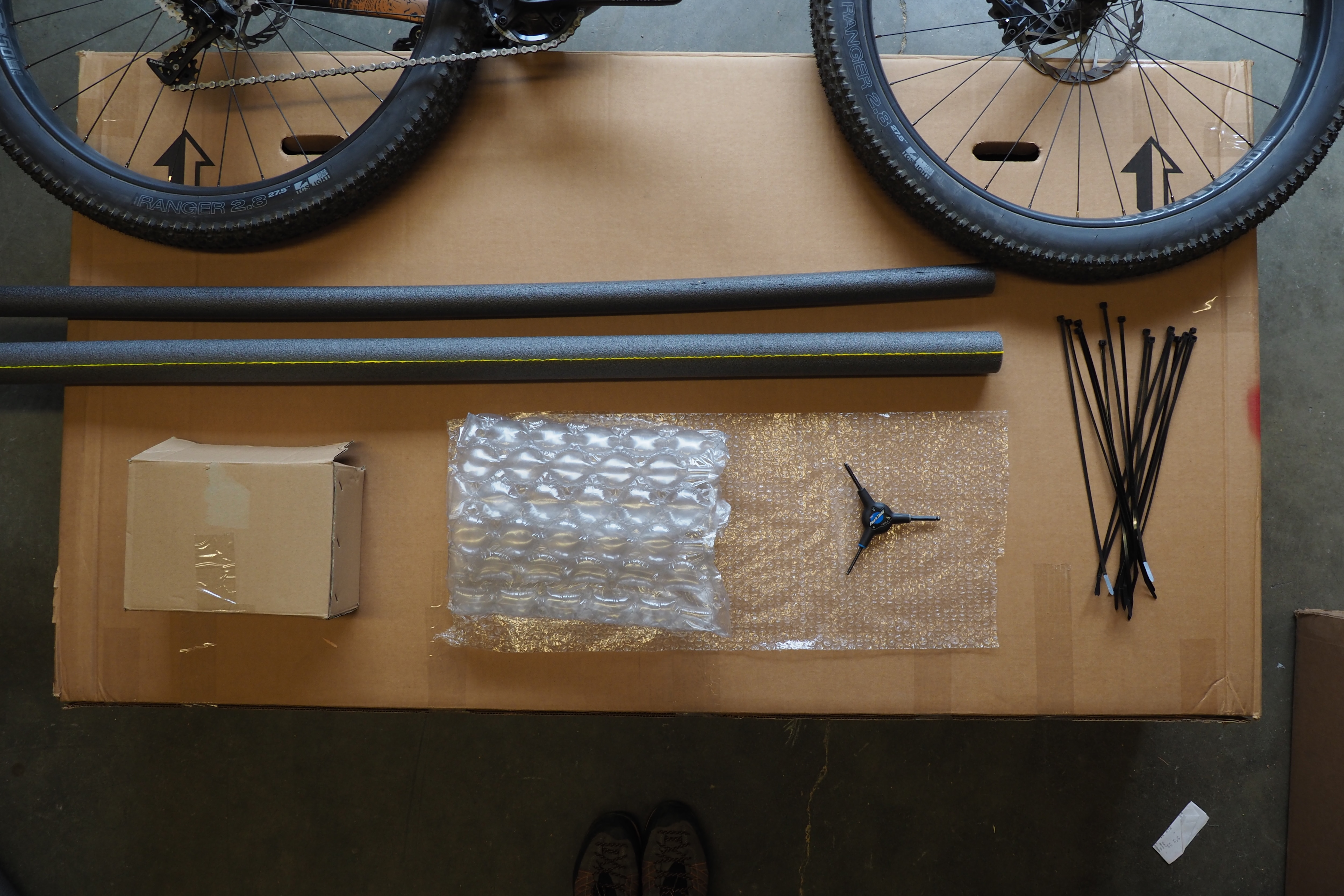
Gather your supplies:
- Bike box or bag
- Bike tool
- Foam padding
- Bubble wrap
- Zip ties
- Scissors
- Shipping tape
- PVC tubing (optional, see #7)
- Extra cardboard
1. Frame and Fork
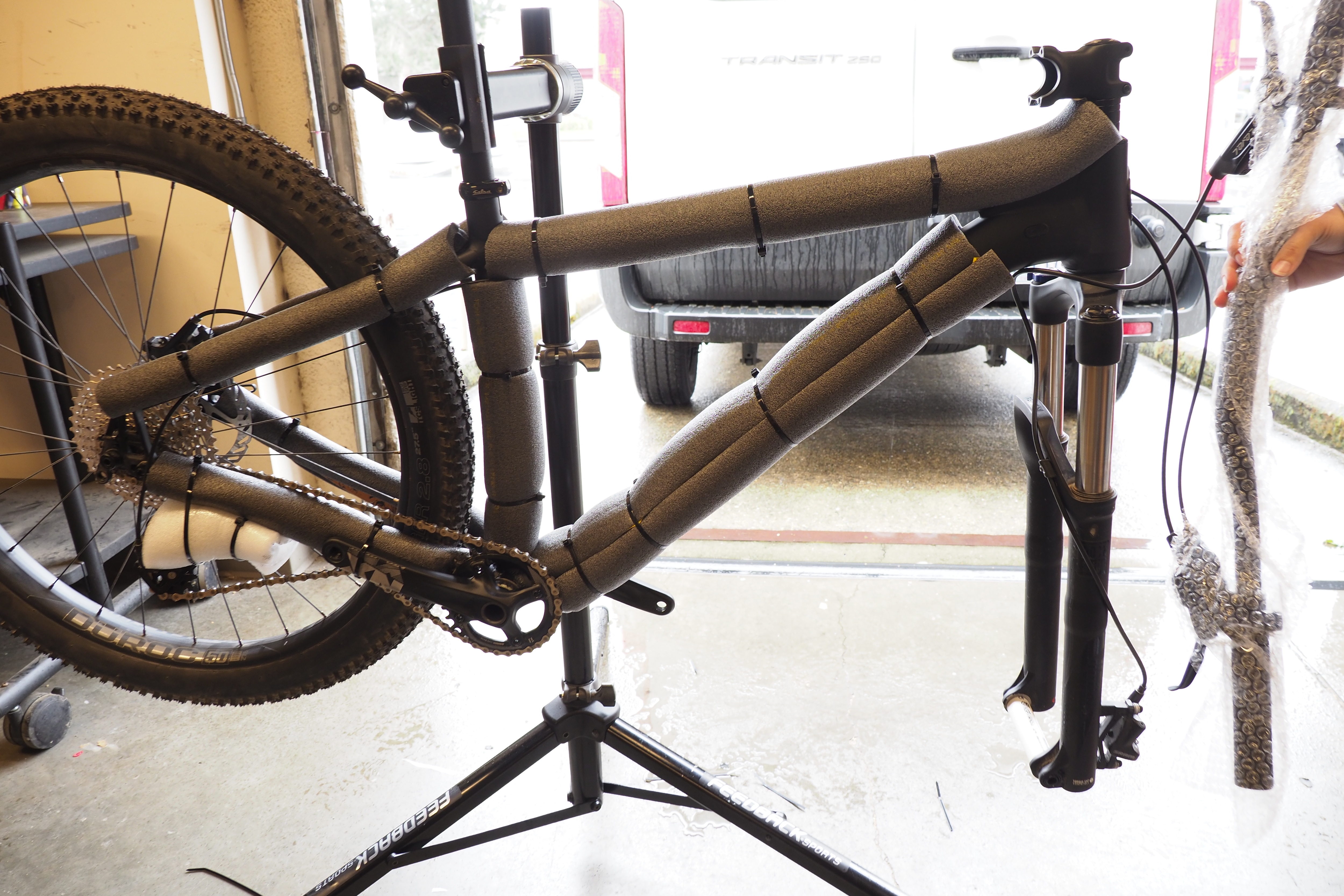
Save your paint job by wrapping tubes with foam padding, secured in place with tape or zip ties. Add durability to thin tubes with an extra layer of cardboard or additional foam.
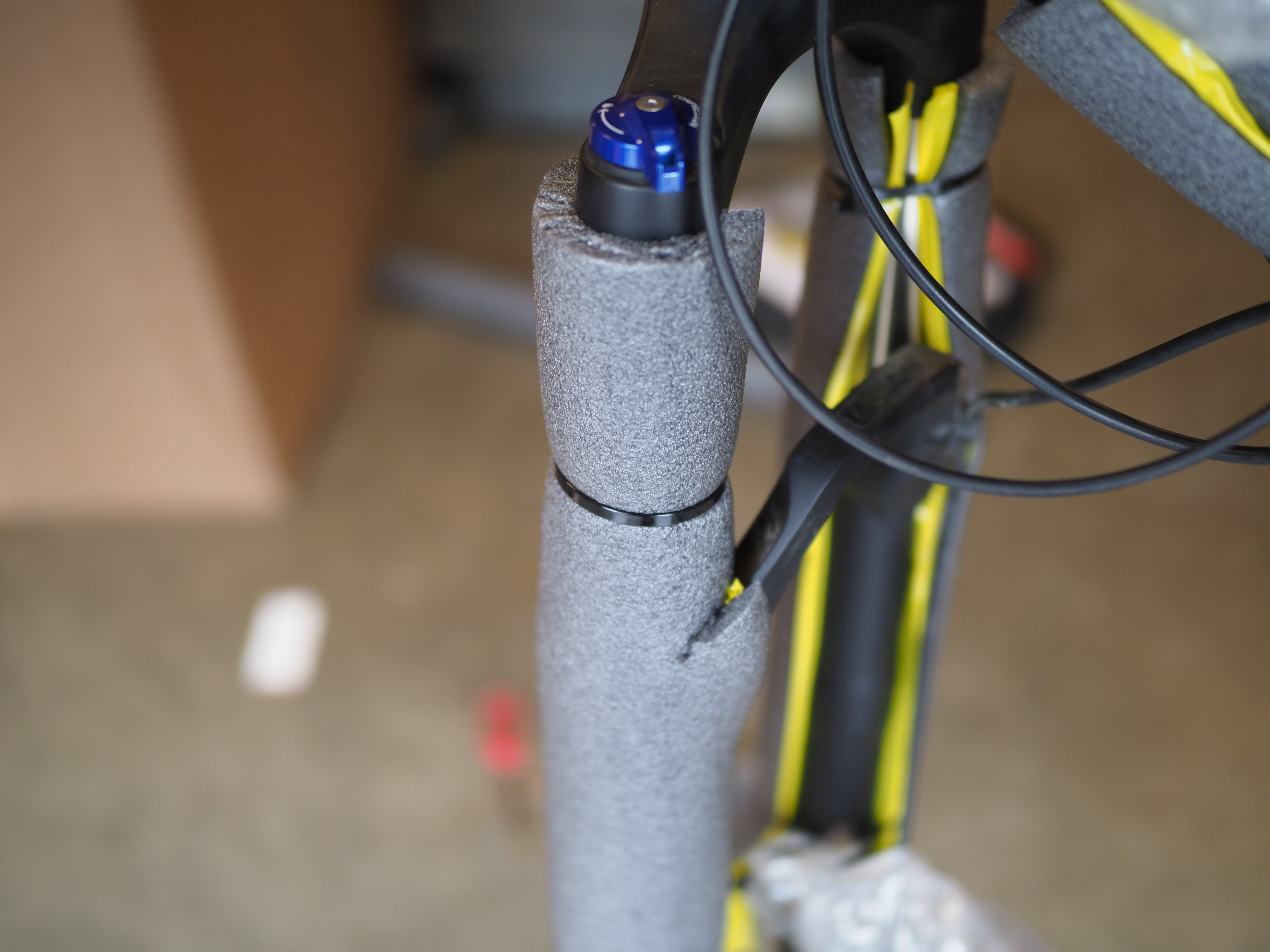
Wrap fork (or stanchions, for mountain bikes) in foam.
For bikes with external cables, place a piece of soft cloth between the frame and cables.
2. Handlebars, Stem and Levers
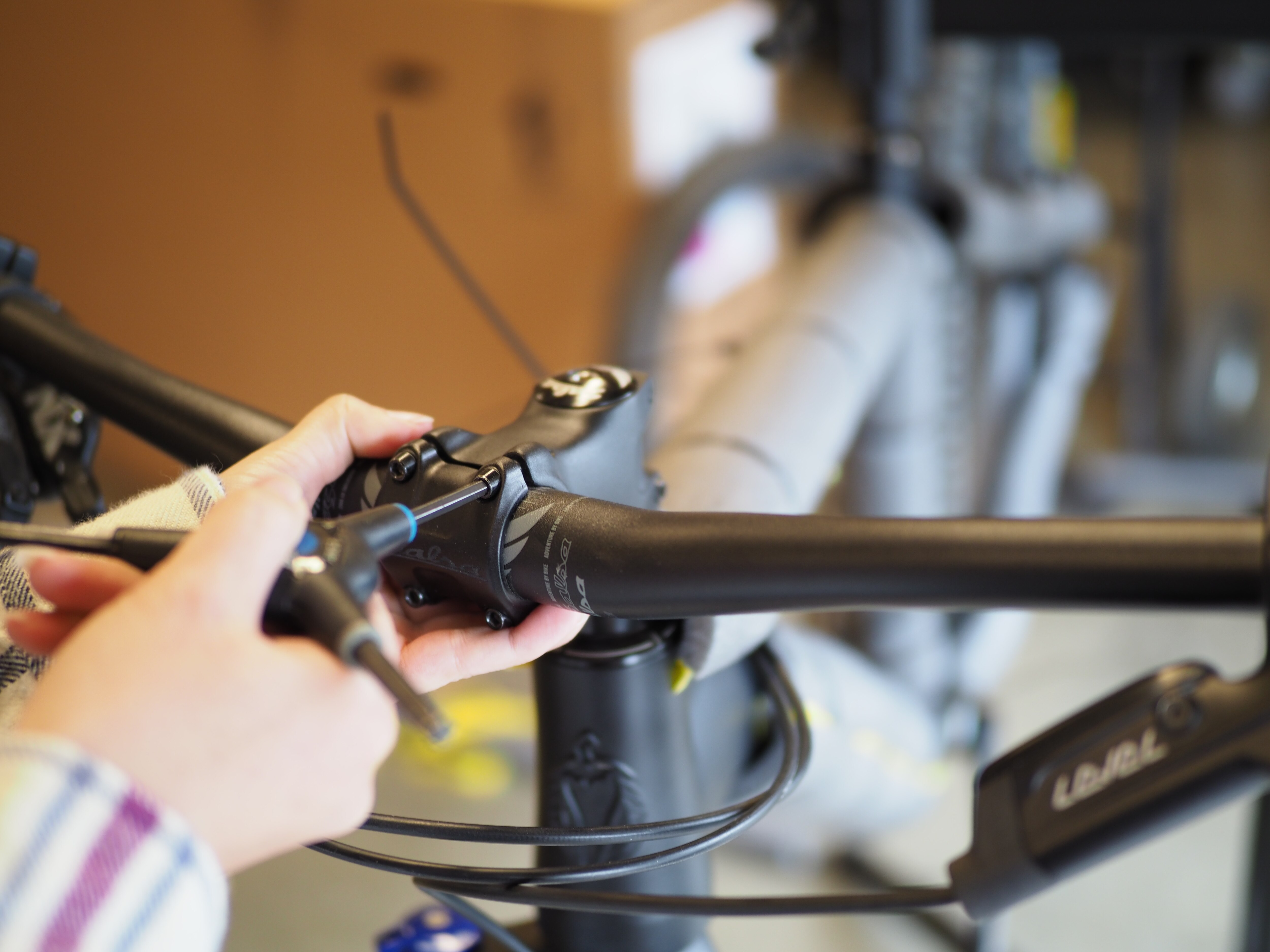
Remove the handlebar and wrap it in foam or bubble wrap.
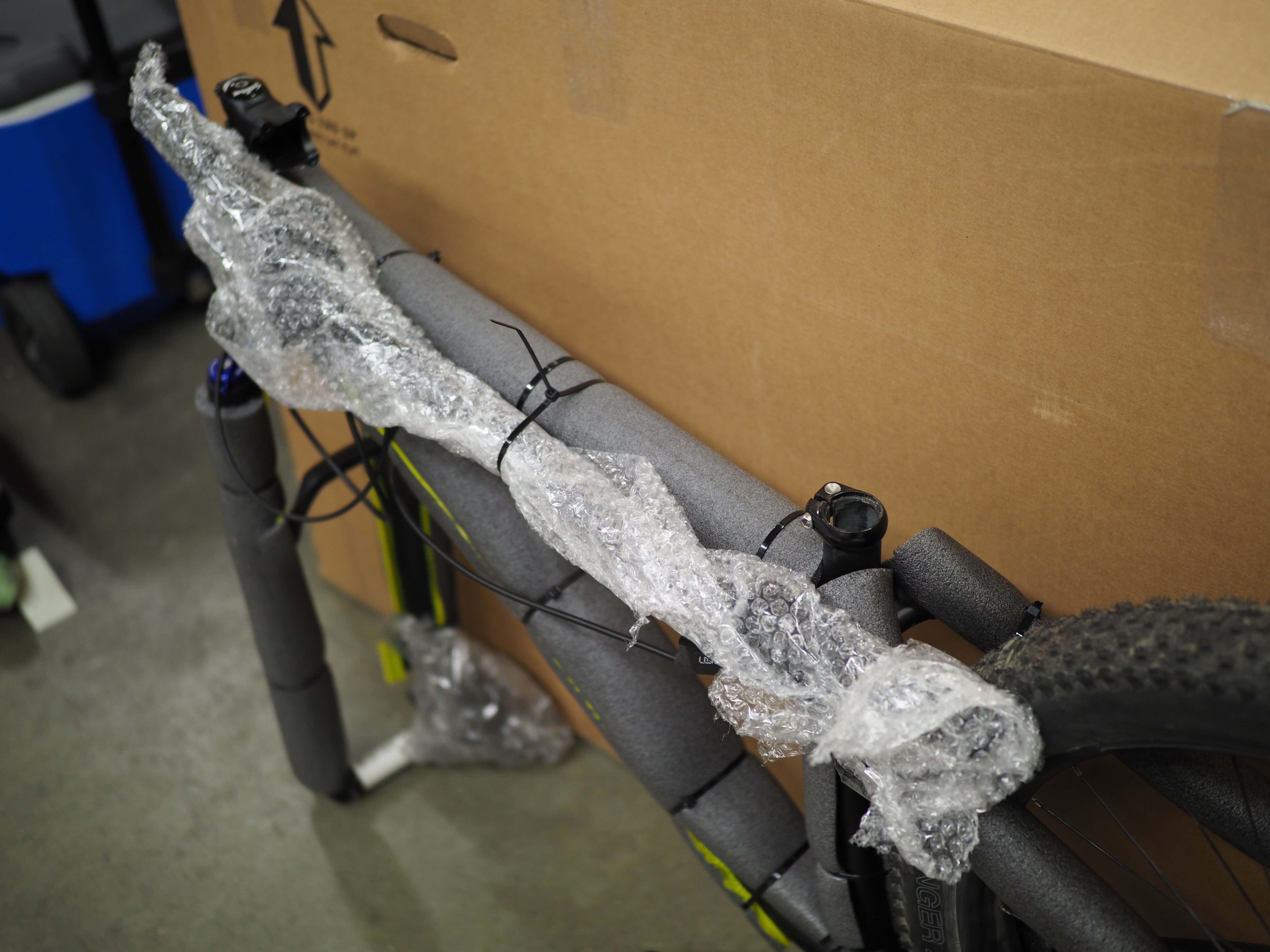
Position it parallel to the top tube so that all shift and brake levers face inward to prevent contact with the sides of the container. Zip tie to secure in place.
3. Seat, Seatpost and Pedals
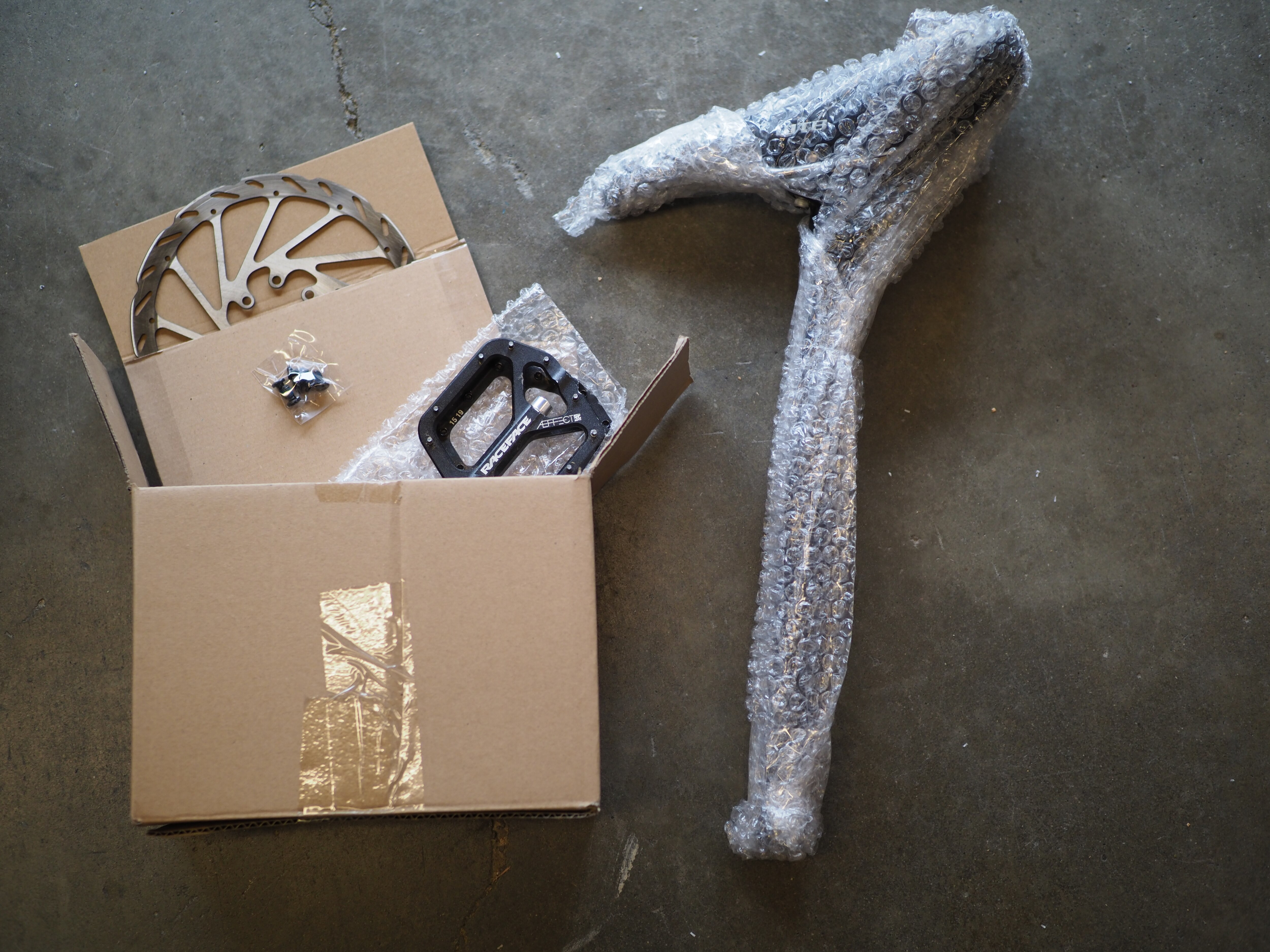
Remove your saddle and post, and pad them with bubble wrap or foam. Once you place them in the box or bag, secure them to keep the seatpost from damaging other parts of the bike. You can zip tie them to the frame or tape them to the inside of the box to prevent movement.
Remove pedals and place in a small bag or box. Secure the container with tape or cardboard once you place it inside the bike box so it doesn't rattle around.
4. Disc Brakes
Use a pad spreader to keep disc brake pads separated while wheels are off.
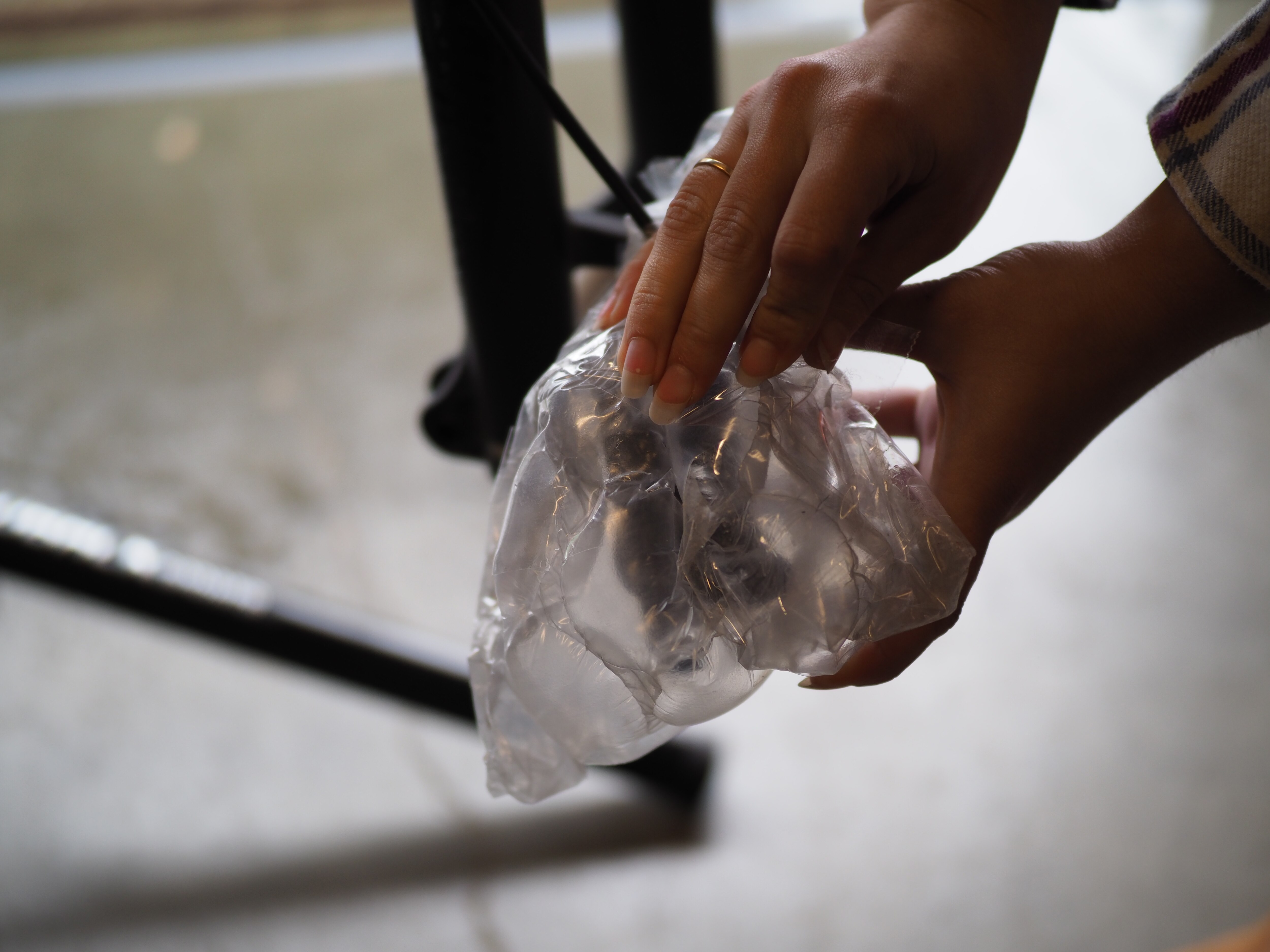
Remove calipers that extend beyond the back dropout of the bike, pad them and secure to inside of the frame. This keeps them from getting damaged or punching through the box when the fork is rotated. It also provides some extra slack in the cables to place the handlebar parallel to the top tube.
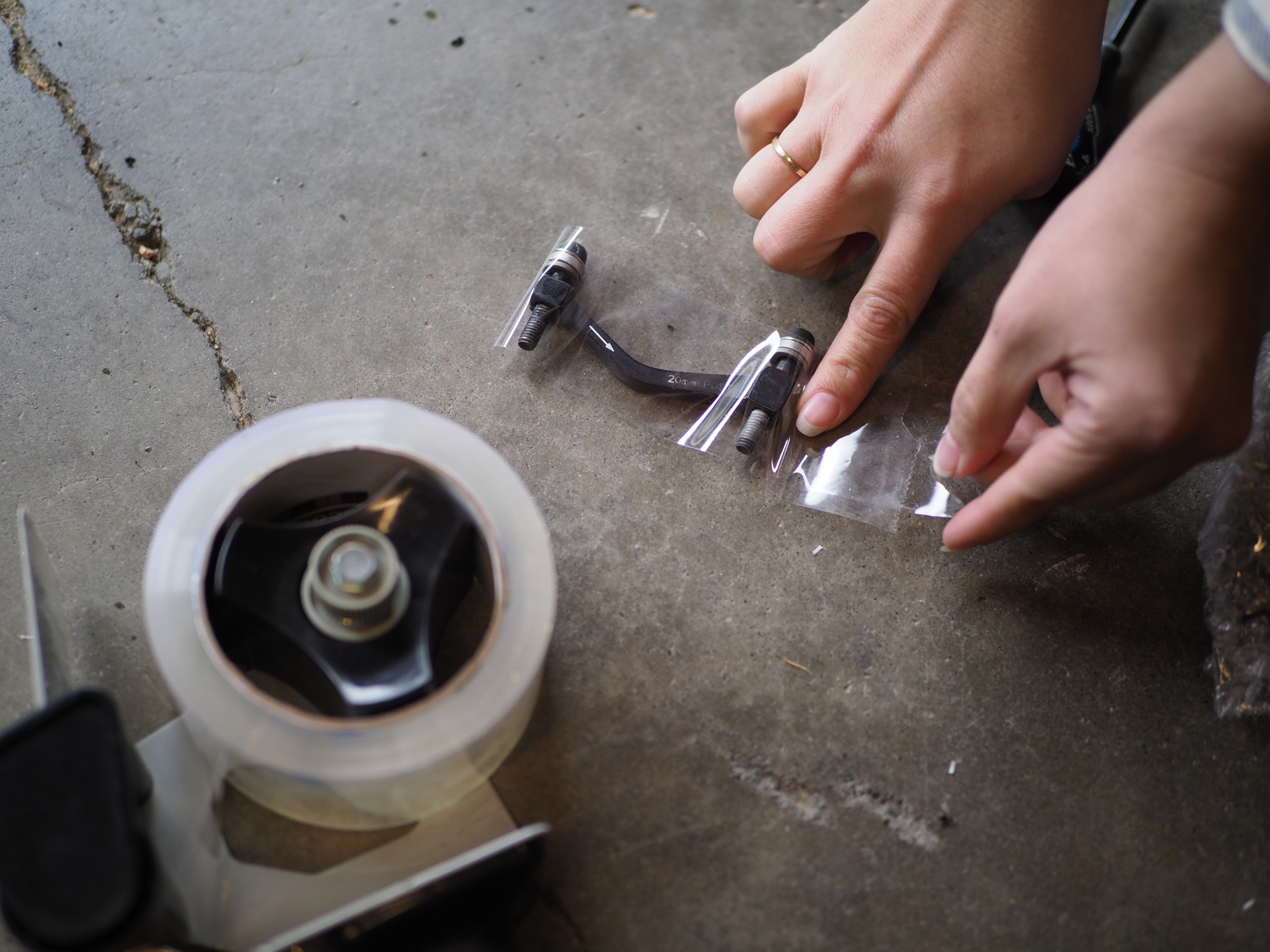
Wrap the caliper mount in shipping tape to keep the hardware secure and store it in your small parts bag or box with the pedals.
5. Rear Derailleur and Hanger
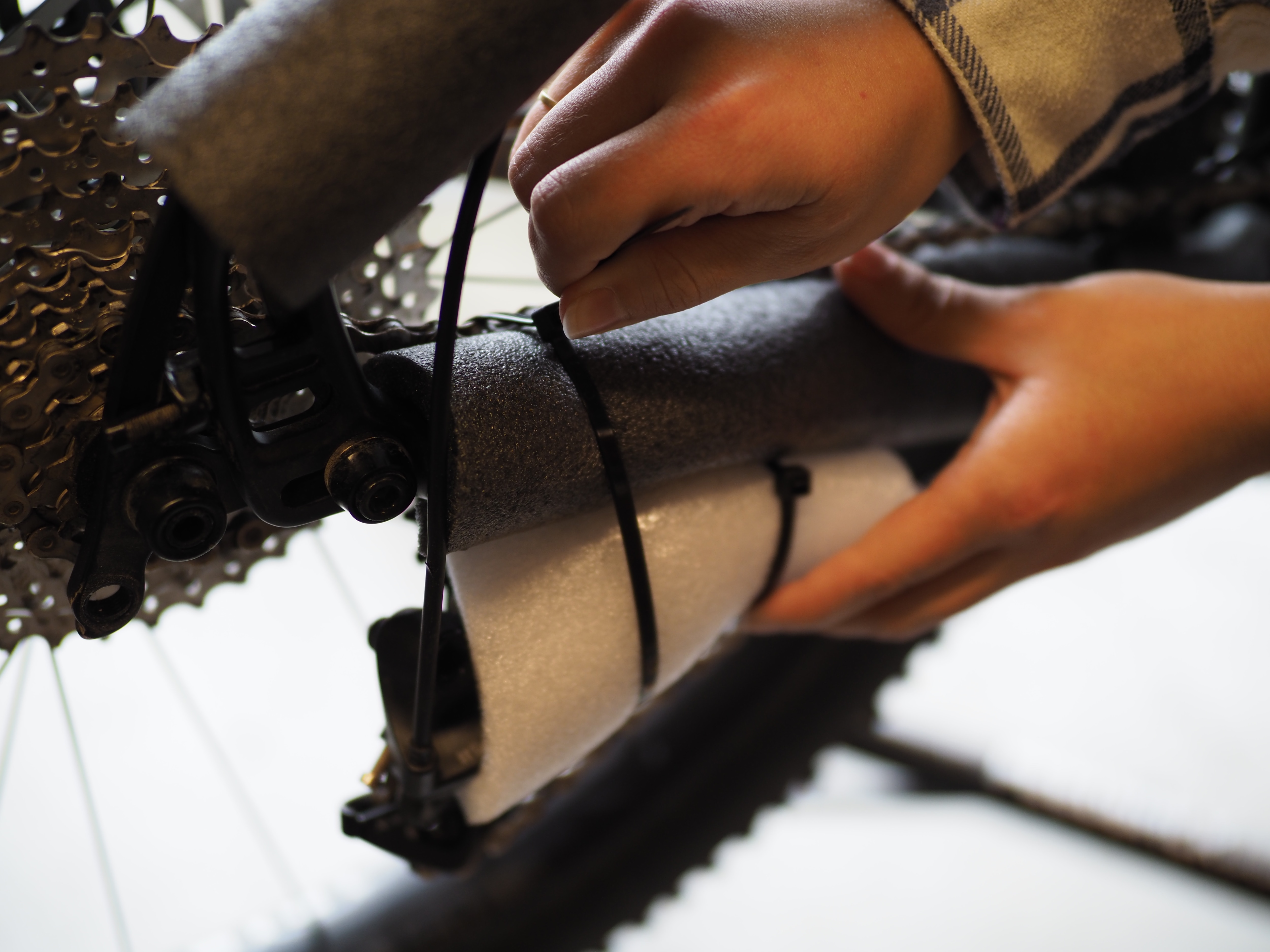
To keep the derailleur and hanger from getting damaged during transit, remove them if possible, wrap them in dense padding and secure to the inside of the frame with tape or zip ties. If you can't remove them, shift the rear derailleur to the easiest gear and protect with bubble wrap and cardboard.
6. Wheels
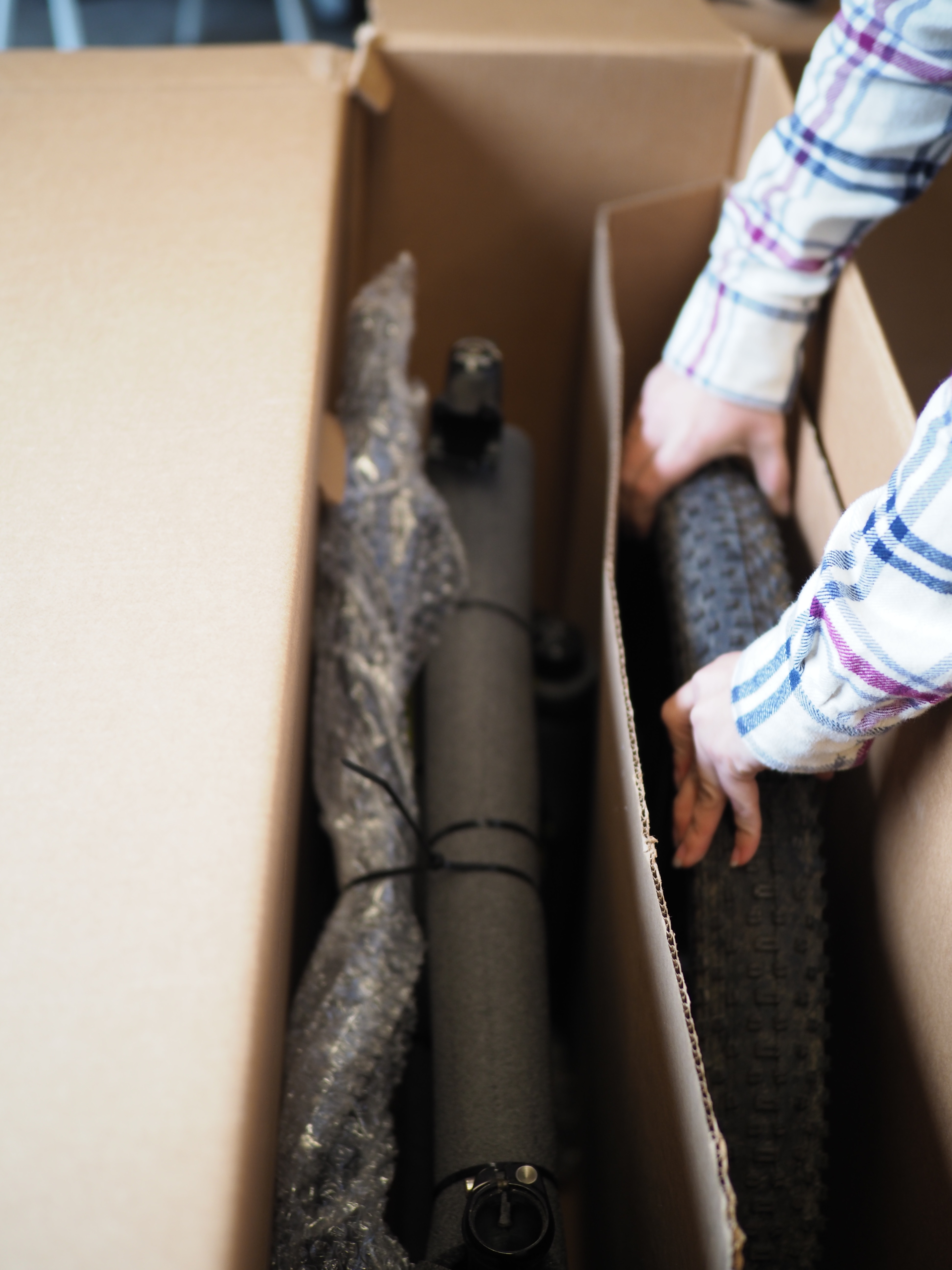
Remove the front wheel. Pad wheel with foam, secure with cardboard in the box or use padded wheel bags. Most bike boxes will accommodate a frame with the rear wheel still attached.
On the rear wheel, cover the cassette with foam or padding to prevent it from damaging other components.
On both wheels, install end caps over the axle ends to keep the axles from damaging the box or other components. If possible, remove skewers, thru-axles and rotors.
7. Dropouts
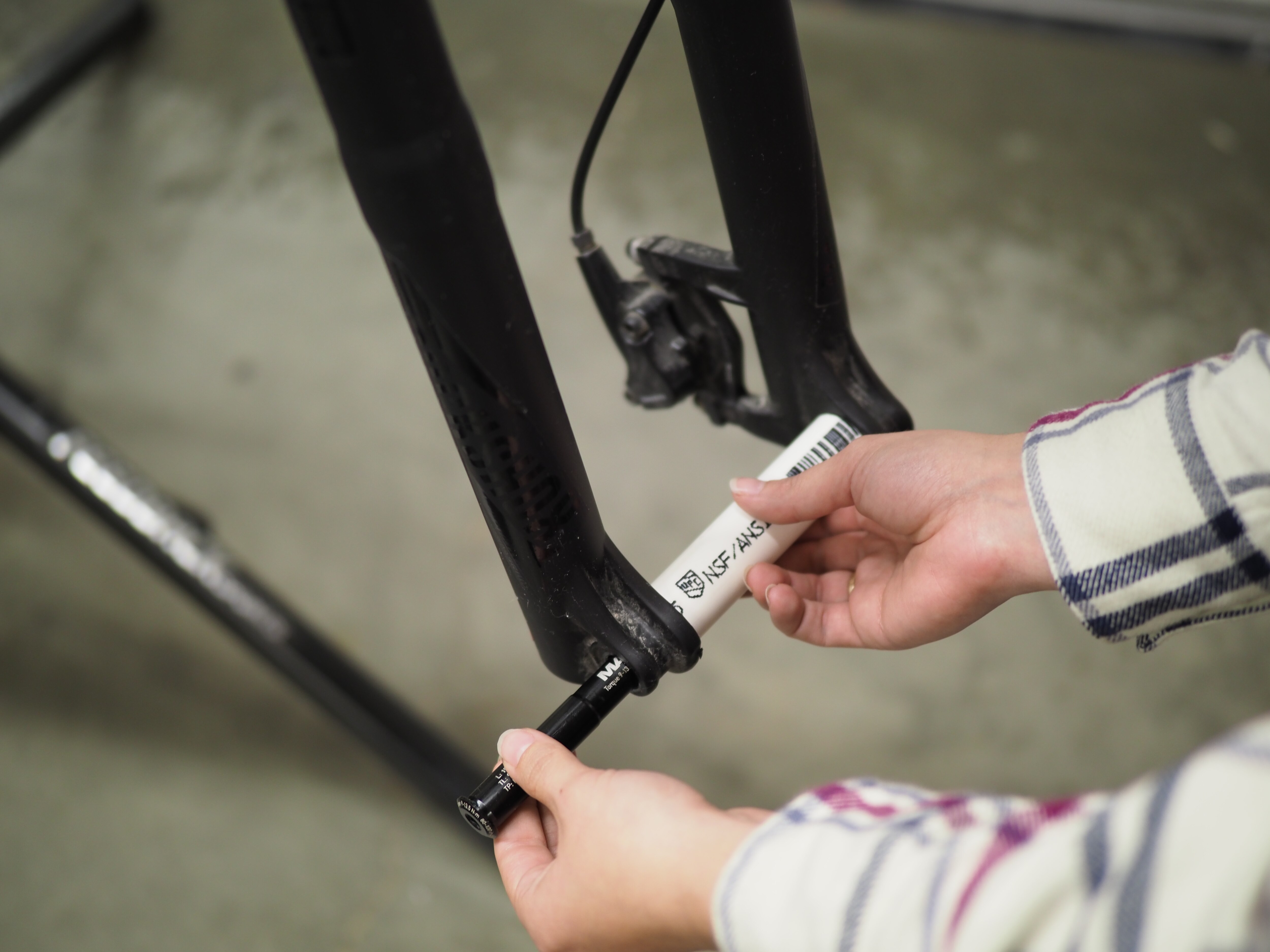
Install a spacer between the fork dropouts to keep them from damaging the box and to prevent the fork from getting compressed.
The following are all good spacer options:
- ½" diameter PVC pipe secured with a skewer or thru-axle (pictured)
- Plastic spacers used by manufacturers secured with tape
- Old hubs
- Threaded axles with nuts
8. Accessories
Remove all accessories like fenders, racks and bottle cages. Stow all small pieces and hardware together in a sealed small parts bag or box and secure inside the bike box with tape or cardboard.
Part Three: Pack and Ship
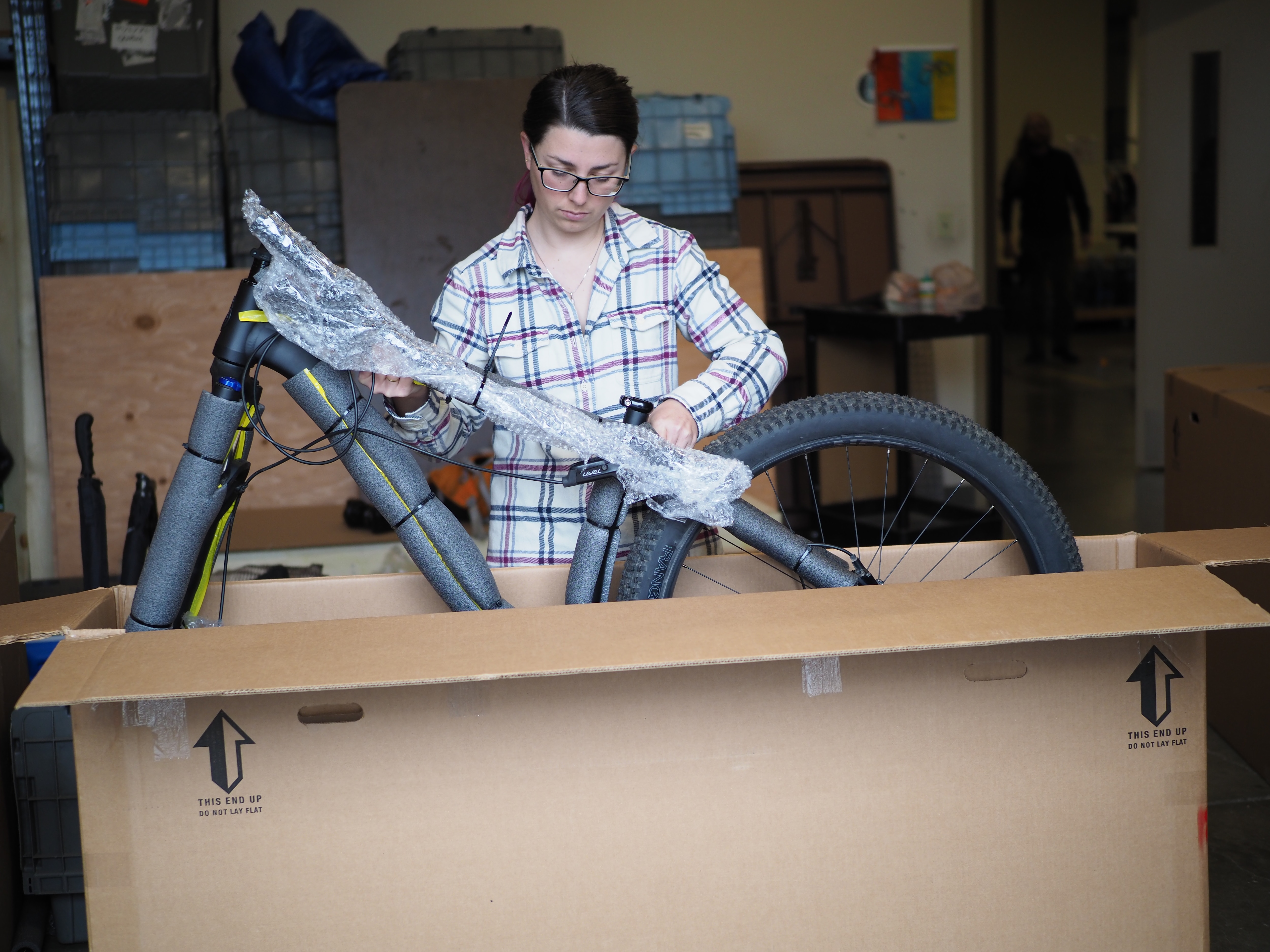
1. Shake, Rattle and Roll
Place your bike and all parts in the container, close it up and shake it. If anything rattles or rolls around, repack accordingly, adding more padding or zip ties if necessary.
2. Choose Your Destination
When possible, it's a good idea to ship your bike to the place you're staying. Alternately, send it to a local bike shop (call ahead to make sure they know it's coming and get some bonus ride beta while you're at it).
3. Label It
Print three labels: two for the outside and one for the inside. Place two of the shipping labels on opposite sides of the box. If using packing tape to apply, cover all four edges of the label with the tape (don't cover the barcode).
If using a travel case, attach the labels using shipping luggage tags.
Place a backup label inside the box in the event that the outer labels get damaged.
4. Prep for Arrival
Bring some spare supplies in case anything goes awry during shipping. We suggest bringing along a tire (suitable for front or rear use), spokes, a shift cable, a quick link, a derailleur hanger, a shock pump and a pair of cable cutters.
